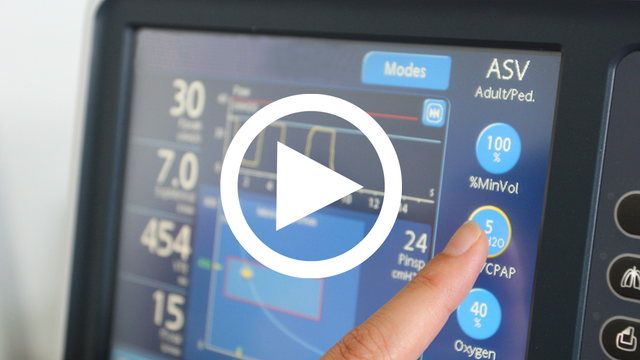

ASV automatically employs lung-protective strategies to minimize complications from AutoPEEP and volutrauma/barotrauma. It also prevents apnea, tachypnea, dead space ventilation, and excessively large breaths. Within the rules of this lung-protective strategy, ASV encourages the patient to breathe spontaneously. The clinician sets the target minute volume and ASV automatically determines the combination of tidal volume and respiratory rate based on the minimal work of breathing principle described by Otis (
ASV is available on all current-model Hamilton Medical ventilators.